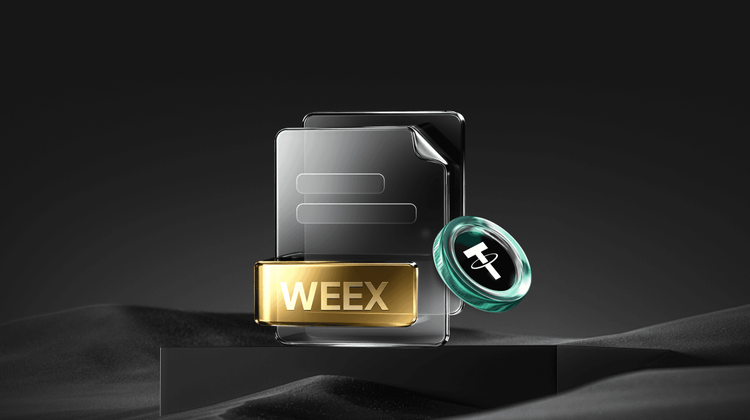Tether and Circle’s Stablecoin Dominance Is Fading: How Distribution Channels Are Outshining Network Effects
Key Takeaways
- Tether and Circle’s grip on the stablecoin market, holding about 85% of the supply worth around 2650 billion dollars, is weakening as distribution channels prove more powerful than traditional network effects.
- Emerging forces like white-label issuance and ecosystem-native stablecoins are allowing blockchains and apps to internalize profits, potentially shifting billions in annual yields away from incumbents.
- DeFi platforms, such as Hyperliquid, are leading the charge by launching their own stablecoins, capturing revenues that once flowed to outsiders like Circle and Coinbase.
- Public chains like Solana are losing out on massive stablecoin yields—estimated at 11 billion dollars annually across several networks—highlighting the need for better coordination to reclaim these funds.
- The future of stablecoin economics favors those who control user distribution and can align incentives with their ecosystems, paving the way for more sustainable revenue models in crypto.
The Shifting Landscape of Stablecoin Power
Imagine a world where the giants of the stablecoin realm, Tether and Circle, once seemed unbeatable, much like how early internet browsers dominated before alternatives chipped away at their thrones. Today, their market share—accounting for roughly 85% of circulating stablecoins totaling about 2650 billion dollars—might have peaked in relative terms, even as the overall stablecoin supply keeps climbing. Projections suggest the total stablecoin market could surpass 1 trillion dollars by 2027, but the spoils won’t funnel primarily to these established players as they did in the last cycle. Instead, a new wave of ecosystem-native stablecoins and white-label issuance strategies is emerging, where blockchains and applications are starting to keep the economic benefits in-house, turning distribution channels into the real moat.
Tether, with its circulating supply of around 1850 billion dollars, is reportedly seeking 20 billion dollars in funding at a 500 billion dollar valuation. Circle, on the other hand, boasts an 800 billion dollar supply and a 350 billion dollar valuation. These numbers are impressive, but the network effects that built their empires are eroding under three key pressures. First, distribution channels are overtaking those vaunted network effects. Think of Circle’s partnership with Coinbase: Coinbase snags 50% of the residual yield from USDC reserves, plus all the yield from USDC held on its platform. In 2024, Circle’s reserve yields hit about 17 billion dollars, with roughly 9.08 billion dollars going to Coinbase. This setup shows how distribution partners can capture the lion’s share of value, prompting platforms with strong reach to launch their own stablecoins rather than letting issuers rake in the profits.
Second, cross-chain infrastructure is making stablecoins interchangeable, almost like swapping currencies at a seamless global ATM. Upgrades to official bridges on major Layer 2 networks, universal messaging protocols from players like LayerZero and Chainlink, and sophisticated routing aggregators mean swapping stablecoins within or across chains is now low-cost and user-friendly. What used to be a hassle—switching between assets based on liquidity needs—is now effortless, diminishing the stickiness of any single stablecoin.
Third, clearer regulations are lowering barriers to entry. Legislation like the GENIUS Act provides a unified framework for U.S.-based stablecoins, reducing risks for infrastructure providers holding these assets. Meanwhile, a growing number of white-label issuers are driving down fixed issuance costs, and Treasury yields offer strong incentives to monetize float. The result? The stablecoin stack is commoditizing, becoming more homogeneous and stripping away the structural edges of the big players.
This commoditization means any platform with solid distribution can internalize stablecoin economics instead of handing yields over to others. Early movers include fintech wallets, centralized exchanges, and increasingly, DeFi protocols. DeFi, in particular, is where this shift is most vivid and impactful, rewriting the rules of value capture.
From Leakage to Gains: DeFi’s New Stablecoin Playbook
Picture DeFi as a bustling marketplace where money flows freely, but for too long, the shopkeepers have been paying rent to distant landlords. Now, that’s changing. Compared to Circle and Tether, many blockchains and apps boast stronger network effects in terms of product-market fit, user loyalty, and distribution efficiency. They’re turning to white-label stablecoin solutions to leverage their user bases and snag yields that once escaped to legacy issuers. For investors who’ve overlooked stablecoins on-chain, this evolution is unlocking fresh opportunities.
Hyperliquid: DeFi’s First Big Breakaway in Stablecoin Strategy
The trend kicked off notably with Hyperliquid, a DeFi powerhouse. At one point, about 55 billion dollars in USDC sat on the platform, funneling an estimated 2.2 billion dollars in annual extra yields straight to Circle and Coinbase, not Hyperliquid itself. Before a validator vote on code ownership, Hyperliquid announced plans for a native issuance centered on its own ecosystem. For Circle, being the go-to trading pair in Hyperliquid’s core markets meant reaping rewards from the exchange’s rapid growth without much giveback to the ecosystem. This value leakage clashed with Hyperliquid’s community-first ethos.
The bidding for USDH drew major white-label stablecoin players like Native Markets, Paxos, Frax, Agora, MakerDAO (Sky), Curve Finance, and Ethena Labs. It was the first large-scale competition for stablecoin economics at the application level, redefining the value of distribution rights. Native ultimately won, offering a neutral, compliant model with reserves managed offline by BlackRock and on-chain support from Superstate. Crucially, 50% of reserve yields feed into Hyperliquid’s treasury fund, with the rest boosting USDH liquidity. While USDH won’t displace USDC overnight, it signals a power shift: in DeFi, moats and profits are moving toward apps and ecosystems with loyal users and robust distribution, away from traditional issuers like Circle and Tether.
The Rise of White-Label Stablecoins: A SaaS-Like Revolution
In recent months, white-label stablecoin models have proliferated, resembling software-as-a-service for crypto finance. Ethena Labs’ “stablecoin-as-a-service” approach is at the forefront, with projects like Sui, MegaETH, and Jupiter either using or planning to issue their own via Ethena’s infrastructure. Ethena’s appeal lies in routing yields directly to holders. USDe’s returns come from basis trades, and though yields have dipped to about 5.5% as supply tops 125 billion dollars, that’s still above U.S. Treasury rates of around 4% and far better than the zero-yield USDT or USDC.
As other issuers pass Treasury yields to users, Ethena’s edge softens—Treasury-backed stablecoins offer a compelling risk-reward balance. If rate cuts continue, basis trade spreads could widen, bolstering yield-bearing models. You might wonder if this skirts the GENIUS Act’s ban on issuers paying yields directly to users. The law doesn’t explicitly forbid third-party platforms or intermediaries from distributing rewards if sourced by the issuer. This gray area persists, and DeFi often thrives in permissionless edges regardless of regulations. Economic realities trump legal fine print here.
Integrating brand alignment into this mix, platforms that prioritize ecosystem harmony are gaining traction. For instance, exchanges like WEEX demonstrate how aligning stablecoin strategies with user needs enhances credibility and retention. By focusing on seamless integration and community benefits, WEEX positions itself as a reliable partner in this evolving landscape, fostering trust and long-term loyalty—much like how Hyperliquid’s move bolsters its ecosystem without alienating users.
The Stablecoin Tax: How Major Blockchains Are Bleeding Yields
Right now, across chains like Solana, BSC, Arbitrum, Avalanche, and Aptos, about 300 billion dollars in USDC and USDT lie idle. At a 4% reserve yield, that’s roughly 11 billion dollars in annual interest flowing to Circle and Tether—about 40% more than these chains’ total transaction fee revenues of around 8 billion dollars. Stablecoins represent the largest untapped value pool in L1s, L2s, and apps.
These ecosystems are essentially subsidizing outsiders with billions yearly. Capturing even a fraction could reshape their economics, providing a more resilient, cycle-resistant revenue base than volatile fees. What’s stopping them? Nothing, really. Options abound: negotiate revenue shares with Circle or Tether (à la Coinbase), tender bids to white-label issuers like Hyperliquid did, or launch natives via platforms like Ethena. Each path has trade-offs—sticking with USDC or USDT offers familiarity, liquidity, and battle-tested stability, while natives promise control and higher yields but face bootstrap challenges. Infrastructure exists for both.
Redefining Blockchain Economics: Stablecoins as Revenue Powerhouses
Stablecoins could become the biggest income driver for some chains and apps, especially when traditional models cap growth by relying solely on fees—revenue only rises if users pay more, clashing with efforts to lower barriers. MegaETH’s USDm, issued with Ethena and backed by BlackRock’s on-chain Treasury product BUIDL, exemplifies this. By internalizing yields, MegaETH runs its sequencer near cost and redirects funds to community initiatives, creating a sustainable, innovation-focused structure.
Solana’s top DEX aggregator, Jupiter, mirrors this with JupUSD, integrating it deeply—from collateral in Jupiter Perps (shifting about 7.5 billion dollars in stablecoin reserves) to liquidity pools in Jupiter Lend. Whether yields fund user rewards, token buybacks, or incentives, they accrue value far better than letting them leak to external issuers. This is the core pivot: yields once passively funneled to old guards are now actively reclaimed by apps and chains.
Valuation Mismatches in Apps and Blockchains
As this unfolds, chains and apps are forging paths to durable revenues less tied to speculative cycles, potentially justifying their often-criticized high valuations. Traditional frameworks value them by total economic activity, with fees as user costs and chain income as what’s captured via burns or treasuries. But this overlooks where real value flows.
Leading this change are app-layer stars like Pump.fun and Hyperliquid, which funnel nearly 100% of revenues (not just fees) into token buybacks, yet trade at lower multiples than infrastructure layers. They’re generating transparent cash flows, not hypothetical ones. Solana, for example, tallied 6.32 billion dollars in fees and 13 billion dollars in revenue over a year, with a 1050 billion dollar market cap and 1185 billion dollar FDV—ratios of 166x fees and 80x revenue, conservative for major L1s. Others hit thousands. Hyperliquid’s 6.67 billion dollar revenue yields a 57x FDV multiple (19x circulating), while Pump.fun’s 7.24 billion dollars is at 5.6x FDV (2x market cap). Apps with tight product fit and distribution are minting serious income at modest multiples.
This signals power shifting to apps, where valuations hinge on real revenues returned to ecosystems. L1 premiums are waning unless chains internalize more value—white-label stablecoins could be step one, transforming passive conduits into active revenue layers.
Coordination Challenges: Why Some Chains Move Faster on Stablecoins
The pivot to ecosystem-aligned stablecoins is underway, but speed varies by coordination prowess and urgency. Sui, though less mature than Solana, acts swiftly, partnering with Ethena for sUSDe and USDi (similar to BUIDL-backed models in Jupiter and MegaETH). This chain-level strategy internalizes economics before path dependencies set in, slated for Q4 launch.
Solana’s story is thornier. With 150 billion dollars in stablecoins (over 100 billion in USDC), it gifts Circle about 5 billion dollars yearly, much rerouted to Coinbase—which subsidizes rival Base via liquidity incentives and investments. Solana is literally funding competitors. Community voices, like Helius founder @0xMert on Twitter, urge an aligned stablecoin with 50% yields for SOL buy-and-burn. Proposals from issuers like Agora echo this, but official response lags.
Solana’s caution stems from striving for credible neutrality to attract institutions like BlackRock, whose endorsements bring capital and legitimacy—reserved mostly for Bitcoin and Ethereum. Backing a specific stablecoin risks perceptions of bias. Its vast ecosystem—hundreds of protocols, thousands of developers, billions in TVL—complicates coordination. Yet inaction costs mount as path dependencies grow. Jupiter’s JupUSD push, integrating yields back to Solana, leads; will others like Pump.fun follow? If apps retain yields, it’s better than external leakage, but collective action is key—protocols tilting liquidity, treasuries allocating wisely, developers tweaking UX, users voting with funds.
As of October 2025, Twitter buzz around stablecoin shifts has intensified, with threads on Solana’s “stablecoin tax” going viral, amassing thousands of retweets. A recent post from @0xMert (dated October 15, 2025) highlighted: “Solana can’t afford to keep subsidizing Base—time for our own stablecoin to capture those yields!” Google searches for “best ecosystem-native stablecoins” have surged 40% in the past month, per trends data, alongside queries like “how to launch white-label stablecoin” and “Ethena USDe yields update.” Official announcements, such as Ethena’s October 20, 2025, blog post, revealed expansions into more chains, emphasizing brand alignment for sustainable growth—echoing how platforms like WEEX build credibility by syncing stablecoin offerings with user ecosystems, enhancing trust in volatile markets.
FAQ
What are the main factors eroding Tether and Circle’s stablecoin dominance?
Several forces are at play, including the rise of distribution channels over network effects, interchangeable cross-chain tech, and clearer regulations enabling white-label options. These allow ecosystems to keep yields in-house.
How do white-label stablecoins benefit DeFi platforms?
They let platforms like Hyperliquid internalize revenues, such as reserve yields, that once went to outsiders, fostering community alignment and sustainable economics without relying on legacy issuers.
Why is Solana losing out on stablecoin yields?
With 150 billion dollars in stablecoins on-chain, yields flow to Circle and Coinbase, subsidizing rivals like Base. Coordination challenges delay shifts to native alternatives.
What role does regulation play in stablecoin evolution?
Laws like the GENIUS Act lower entry barriers and risks, commoditizing stablecoins and encouraging ecosystems to launch their own for better control and yields.
How can investors spot opportunities in this stablecoin shift?
Look for chains and apps overcoming coordination hurdles to internalize yields, turning them into revenue engines—potentially boosting token values through buybacks and incentives.
You may also like

Lido DAO’s Increased Development and Market Dynamics Elevate LDO Price
Key Takeaways Lido DAO’s development activities have surged by 690%, signifying substantial growth. The Lido DAO token (LDO)…

Hyperliquid Whales Shift Strategies: BTC Longs Decline, ETH Shorts Dominate
Key Takeaways A significant reduction in Bitcoin long positions has been observed on Hyperliquid, with large holders decreasing…

December 26th Market Key Intelligence, How Much Did You Miss?

Crypto Christmas Heist: Over $6 Million Lost, Trust Wallet Chrome Extension Wallet Hacked Analysis

Trust Wallet Hack Results in $3.5 Million Loss for Major Wallet Holder
Key Takeaways A significant Trust Wallet hack led to the theft of $3.5 million from an inactive wallet.…

PancakeSwap Launches LP Rewards on Base Network
Key Takeaways PancakeSwap has introduced liquidity provider (LP) rewards for 12 v3 pools on the Base network, facilitated…

Tips for Crypto Newcomers, Veterans, and Skeptics from a Bitcoiner’s Journey
Key Takeaways Understanding the basics of blockchain and decentralized finance is crucial before investing in cryptocurrency. Newcomers should…

Blockchains Quietly Brace for Quantum Threat Amid Bitcoin Debate
Key Takeaways Cryptocurrency networks, especially altcoins, are enhancing security to prepare for potential quantum computing threats. Bitcoin faces…

Canton Token Surges Amid DTCC’s Tokenized Treasury Plans
Key Takeaways Canton Coin has surged by approximately 27% due to growing institutional interest and DTCC’s announcement to…

Aave Governance Vote Rejected Amidst Tensions Over Brand Ownership
Key Takeaways: A controversial governance proposal at Aave seeking DAO control over brand assets was rejected, sparking significant…

Tips for Crypto Newbies, Veterans, and Skeptics from a Bitcoiner Who Buried $700M
Key Takeaways Understanding the basics of cryptocurrency and blockchain technology is crucial for newcomers before investing. Veterans should…

Blockchains Quietly Ready Themselves for the Quantum Threat as Bitcoin Debates Its Timeline
Key Takeaways: Altcoin blockchains, including Ethereum and Solana, are proactively developing defenses against a potential quantum computing threat,…

Canton Coin Rallies as DTCC Introduces Tokenized Treasury Plans
Key Takeaways Canton Coin surged by 27% following DTCC’s announcement of tokenizing US Treasury securities on its Canton…

Canton Token Climbs Amid DTCC’s Tokenized Treasury Plans
Key Takeaways: The Canton Coin experienced a 27% increase following DTCC’s announcement of tokenizing US Treasury securities. The…

Blockchains Quietly Brace for Quantum Threats while Bitcoin Engages in Timeline Debate
Key Takeaways: Diverse blockchains are proactively exploring quantum-resistant technologies, unlike Bitcoin, where consensus on quantum threat response is…

Aave Governance Vote Ends in Rejection after Community Pushback
Key Takeaways: Aave’s governance proposal to transfer brand asset control to a DAO was rejected with 55.29% voting…

Three Titans Bet $17 Million, FIN Makes Strong Move into Cross-Border Payments

Cryptocurrency as a Christmas Gift? Gen Z Is Reconsidering
Lido DAO’s Increased Development and Market Dynamics Elevate LDO Price
Key Takeaways Lido DAO’s development activities have surged by 690%, signifying substantial growth. The Lido DAO token (LDO)…
Hyperliquid Whales Shift Strategies: BTC Longs Decline, ETH Shorts Dominate
Key Takeaways A significant reduction in Bitcoin long positions has been observed on Hyperliquid, with large holders decreasing…
December 26th Market Key Intelligence, How Much Did You Miss?
Crypto Christmas Heist: Over $6 Million Lost, Trust Wallet Chrome Extension Wallet Hacked Analysis
Trust Wallet Hack Results in $3.5 Million Loss for Major Wallet Holder
Key Takeaways A significant Trust Wallet hack led to the theft of $3.5 million from an inactive wallet.…
PancakeSwap Launches LP Rewards on Base Network
Key Takeaways PancakeSwap has introduced liquidity provider (LP) rewards for 12 v3 pools on the Base network, facilitated…
Popular coins
Latest Crypto News
Customer Support:@weikecs
Business Cooperation:@weikecs
Quant Trading & MM:bd@weex.com
VIP Services:support@weex.com
